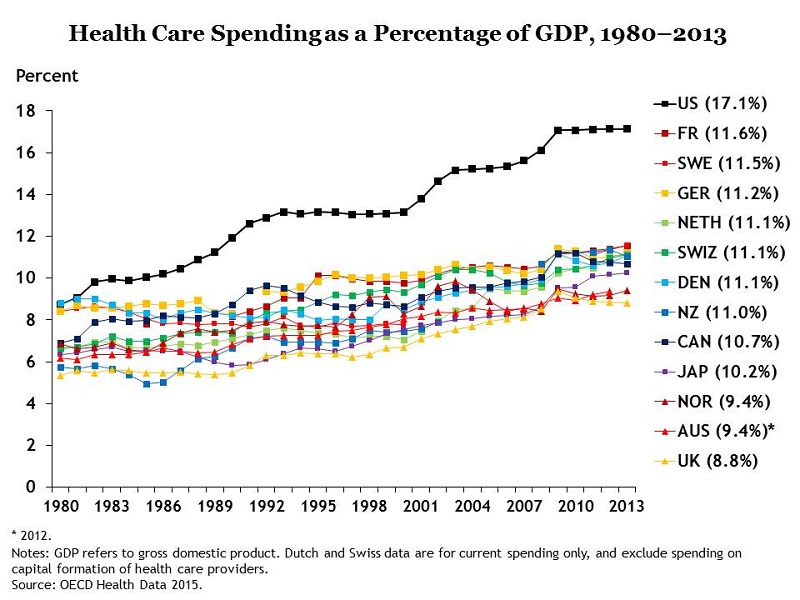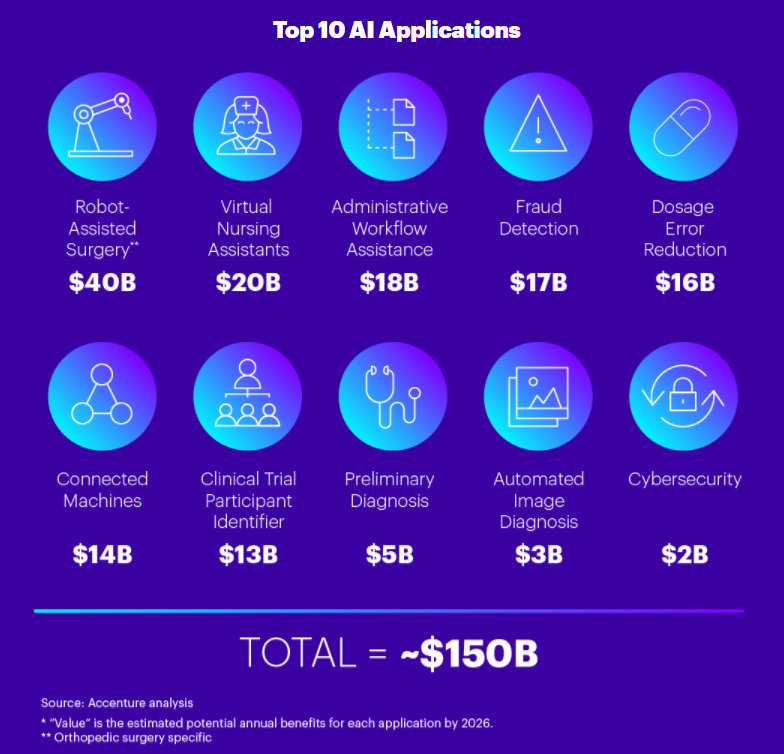
Aug. 22, 2017
By: Michael Feldman
While AI is poised to sweep through major sectors of the economy over the next decade, perhaps no industry should be more welcoming to this technology than that of healthcare. And given that the US is the most technologically advanced nation in the world, and the one with the most expensive healthcare, the country could end up being the proving ground for AI-powered medicine.
Consider the unique position of the United States. It spends a greater portion of its economic output on medical care than any other nation in the world; in 2015 healthcare expenditures reached 17.8 percent of GDP. Health Affairs, a journal specializing in healthcare policy, forecasts that proportion will grow to 20.1 percent of GDP by 2025. To translate that into more concrete terms, the average monthly health insurance premium of someone living in the United States today is $393 dollars, which rises to $701 for those of us in the 55-64 age bracket. Essentially, insurance customers are buying the equivalent of a new smartphone every month, strictly as a hedge against medical costs.
Much of that expense is a consequence of steeply-priced medical products and services in the US, which, not surprisingly, are the highest in the industrialized world. Despite this level of spending, health outcomes for Americans are below par compared to other countries, especially with regards to life expectancy and mortality for chronic diseases. That unfortunate combination has led to social and political tensions that are now playing out in the US.

At the same time, the country is flush with AI technology and research. Many of the biggest users and developers of this technology, such as Google, Microsoft, Amazon, and Facebook are US-based. Likewise for AI providers like NVIDIA, Intel, IBM, and others. As we wrote last week, the US Department of Energy is installing a supercomputer with more than three exaflops of machine learning capability.
The country is also a hotbed of AI startups, many of which have specialized in healthcare applications. According to one estimate, in 2016 $3.1 billion dollars of venture capital has flowed into US-based AI startups. Although not all of these companies are healthcare-focused, CB Insights says that healthcare has been the top sector for VC investors. As a reflection of that interest, Frost & Sullivan is forecasting a 40 percent CAGR for the health AI market over the next several years.
For those of you who read TOP500 News on a regular basis, or any other publication covering the machine learning/AI space, it’s evident that the technology has a huge potential to improve medical diagnostics, drug discovery, surgical accuracy, insurance fraud detection, and overall patient care. That will not just lower the cost of healthcare, but improve its quality as well. Accenture projects that the US can save $150 billion annually by 2026 by applying AI technology to the industry.

Is the US medical community ready? Not so much. A 2015 analysis by McKinsey & Company determined the healthcare sector as one of the least digitized areas of the economy. Specifically, healthcare was ranked 19 out of the 22 sectors studied. If we consider digitization as a precursor to the penetration of AI applications, the industry has a lot of ground to make up.
A recent op-ed piece in STAT on this subject, penned by Jack Stockert, a medical doctor who leads a healthcare innovation company in Silicon Valley, reflects the generally positive attitude of AI-powered healthcare by the more technologically progressive voices in the medical community. “I’ve decided to welcome the coming revolution, believing that it offers a wonderful opportunity for increases in productivity that will transform health care to benefit everyone,” writes Stockert.
Nonetheless, Stockert seems to be under the impression that the value of AI in medicine will be constrained by its lack of human touch and the intricacies involved in disbursement of healthcare by flesh-and-blood doctors. He writes:
“If you break down the patient-physician interaction, its complexity is immediately obvious. Requirements include empathy, information management, application of expertise in a given context, negotiation with multiple stakeholders, and unpredictable physical response (think of surgery), often with a life on the line. These are not AI-applicable functions.”
Except for the first attribute, empathy, which can presumably be supplied by anyone close to the patient, the others are all well within the reach of AI technology. In fact, information management, expertise application, complex negotiations, and difficult surgeries are, in a sense, ideal applications for AI, since they are often better performed without human bias and proneness to error. Obviously, not all of these capabilities are available today, but there is nothing inherently limiting in the technology, given the trajectory of current hardware and software.
A more whole-hearted embrace of AI is reflected in an April 2017 report from Heathcare IT News. The article notes that some early adopter hospitals are already deploying the technology in an effort to contain costs and provide better care. Carolinas HealthCare, for example, is developing intelligent self-service tools that enables patients to diagnose and treat themselves, at least in certain constrained scenarios.
The article also highlights Health Catalyst EVP Dale Sanders, who believes that AI is advancing more rapidly than anything he’s experienced before. (His background spans working with neural networks in the Air Force to being the CIO of the national healthcare system in the Cayman Islands.) “The rate of improvement happening in machine learning is way beyond what Moore's Law is to chips,” said Sanders.
Such enthusiasm will be tempered by a generally conservative medical community trying to cope with a technology that promises to transform livelihoods and businesses. Where life and death considerations have to be made, regulatory hurdles will be put in place to protect patients and providers. Nevertheless, the precarious economic model of the current healthcare industry in the US will yield to the inexorable forces of supply and demand. And, by all accounts, the supply side of that equation is going to be driven to a large degree by AI.
